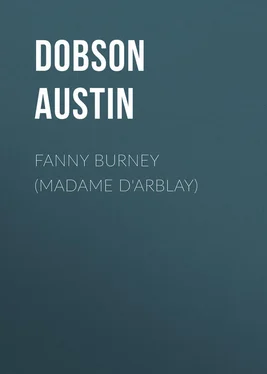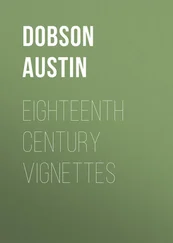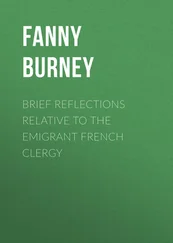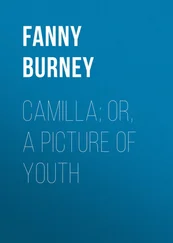Austin Dobson - Fanny Burney (Madame D'Arblay)
Здесь есть возможность читать онлайн «Austin Dobson - Fanny Burney (Madame D'Arblay)» — ознакомительный отрывок электронной книги совершенно бесплатно, а после прочтения отрывка купить полную версию. В некоторых случаях можно слушать аудио, скачать через торрент в формате fb2 и присутствует краткое содержание. Издательство: Иностранный паблик, Жанр: foreign_antique, foreign_prose, на английском языке. Описание произведения, (предисловие) а так же отзывы посетителей доступны на портале библиотеки ЛибКат.
- Название:Fanny Burney (Madame D'Arblay)
- Автор:
- Издательство:Иностранный паблик
- Жанр:
- Год:неизвестен
- ISBN:нет данных
- Рейтинг книги:5 / 5. Голосов: 1
-
Избранное:Добавить в избранное
- Отзывы:
-
Ваша оценка:
- 100
- 1
- 2
- 3
- 4
- 5
Fanny Burney (Madame D'Arblay): краткое содержание, описание и аннотация
Предлагаем к чтению аннотацию, описание, краткое содержание или предисловие (зависит от того, что написал сам автор книги «Fanny Burney (Madame D'Arblay)»). Если вы не нашли необходимую информацию о книге — напишите в комментариях, мы постараемся отыскать её.
Fanny Burney (Madame D'Arblay) — читать онлайн ознакомительный отрывок
Ниже представлен текст книги, разбитый по страницам. Система сохранения места последней прочитанной страницы, позволяет с удобством читать онлайн бесплатно книгу «Fanny Burney (Madame D'Arblay)», без необходимости каждый раз заново искать на чём Вы остановились. Поставьте закладку, и сможете в любой момент перейти на страницу, на которой закончили чтение.
Интервал:
Закладка:
But of this, unhappily, no record has been preserved; and it was some years before a second volume gave the busy Doctor opportunity for a further jubilation. 23 23 The second volume appeared in 1782, and the third and fourth volumes, completing the work, in 1789.
Beyond the fact that the Burneys, and Fanny in particular, made friends (through the Stranges) with the Miss Paynes, daughters of the famous old bookseller in Castle Street, “next the Upper Mews-Gate,” whose L-shaped shop was so well known to Eighteenth Century bibliomaniacs, 24 24 In September, 1785, Miss Sally Payne married Captain James Burney, Fanny’s brother.
– little remains of interest from the records of 1775. For 1776 there is no journal at all, what had been written having been “destroyed in totality,” as consisting wholly of family matters or anecdotes; and save for a very graphic picture of the slatternly Duchess of Devonshire in St. James’s Park, no very attractive correspondence, although Mr. Crisp refers to a “conversation piece” which Fanny drew of the fine company at the house of Sir James Lake, the great portrait collector, which should have been good to read. “If specimens of this kind had been preserved of the different Tons that have succeeded one another for twenty centuries last past,” he writes, “how interesting would they have been! infinitely more so, than antique statues, bas-reliefs, and intaglios.” In a fragment dated 2 December there is a vignette of Nollekens the sculptor, “a jolly, fat, lisping, laughing, underbred, good-humoured man as lives: his merit seems pretty much confined to his profession, and his language is as vulgar as his works are elegant.” Mrs. Nollekens (the very handsome daughter of Fielding’s friend Justice Welch), his wife, is also mentioned: “a civil, obliging, gentle sort of woman; rather too complaisant.” Then there is a costume-piece of “Miss B – something , a sister-in-law of Mr. Hayes of the Pantheon,” and not entirely unsuggestive of Lady Louisa Larpent in Evelina ; “a young lady quite à-la-mode , – every part of her dress, the very pink and extreme of the fashion; – her [head] erect and stiff as any statue; – her voice low, and delicate, and mincing; – her hair higher than twelve wigs stuck one on the other; – her waist taper, and pinched evidently; – her eyes cast languishingly from one object to another, and her conversation very much the thing .” Decidedly “Daddy” Crisp was right in saying: “To do you justice, Fanny, you paint well!”
For the next year, 1777, there is only one letter to Mr. Crisp; but it is an important one, since it gives Miss Burney’s account of her first meeting with Dr. Johnson, to which accident, indeed, it owes its preservation. Dr. Burney had for some time known Johnson slightly, – he had written to him from Lynn with regard to the Dictionary; he had also met him at intervals; and, as we have seen, Johnson, notwithstanding his insensibility to music, had read and appreciated the Musical Tours. Writing Dr. Burney’s Memoirs in extreme old age, his daughter seems to have thought that Johnson had already accompanied her father to Winchester to put his youngest son, Richard, under the care of the then Head Master of that day, Joseph Warton; and that he had also, before this date, interested himself to procure Dr. Burney access to the libraries at Oxford. But her memory must have led her astray, for both these things, as is plain from Boswell, belong to 1778, while Miss Burney’s “first sight” of the great man demonstrably took place on the 20th March, 1777, 25 25 Early Diary , 1889, ii. 153; Birkbeck Hill’s Johnson’s Letters , 1892, ii. 5, and note.
Конец ознакомительного фрагмента.
Текст предоставлен ООО «ЛитРес».
Прочитайте эту книгу целиком, купив полную легальную версию на ЛитРес.
Безопасно оплатить книгу можно банковской картой Visa, MasterCard, Maestro, со счета мобильного телефона, с платежного терминала, в салоне МТС или Связной, через PayPal, WebMoney, Яндекс.Деньги, QIWI Кошелек, бонусными картами или другим удобным Вам способом.
1
This was Fanny Burney’s later friend, – the beautiful Mrs. Crewe of Reynolds, and the “Amoret” of Sheridan and Charles Fox.
2
Memoirs of Dr. Burney , 1832, i. 134.
3
Dr. Birkbeck Hill’s Boswell’s Johnson , 1887, i. 420. In a note communicated by Burney in 1799 to the third edition of Boswell’s book, he dates this performance “1769,” when (he says) he resided at Norfolk. But his memory must have deceived him, for according to the Annual Register for 1763, the Burlesque was performed at Ranelagh on June 10 in that year, having been previously published as a pamphlet, which is to be found in the British Museum; and it figures among the new books for June, 1763, in the Gentleman’s Magazine . The point is a trifling one, only important here because the success of the Ode has been advanced as one of the things which decided its composer to leave Lynn for London in 1760.
4
Admiral Burney’s recollections are referred to in Hood’s “Preface” to the separate issue of The Dream of Eugene Aram published in 1831, with William Harvey’s illustrations.
5
Memoirs of Dr. Burney , 1832, ii. 170-1.
6
Crisp’s Virginia was published anonymously by Tonson in 1754 with a dedication to the writer’s friends, the Earl and Countess of Coventry.
7
The Cunning Man ( i. e. fortune-teller or soothsayer) was produced at Drury Lane in 1766 when Rousseau came to England, but it was coldly received ( Biographia Dramatica , 1812, ii. 145).
8
In Letter lxiv. of Evelina , Miss Burney, applying this locution to Lord Orville, attributes it to Marmontel. The above passage is printed in the “Introduction” to the Diary and Letters , 1892, i. pp. xi-xii.
9
Oxford Journal , 23 June 1769.
10
Dr. Birkbeck Hill (Boswell’s Johnson , 1887, iv. 186 n.) seems, perhaps not unnaturally, to doubt this, as Burney “writes chiefly of music.” But it is confirmed by a passage in the Early Diary , 1889, i. 212. “He [Baretti] told my father that Dr. Johnson.. has read both his Tours with great pleasure, and has pronounced him to be one of the first writers of the age for travels!” Moreover, in the second Tour, the author was less chary of personal anecdote. In Edward FitzGerald’s letters, he draws Carlyle’s attention to some of the very interesting particulars which the second Tour contains concerning Frederick the Great ( More Letters of Edward FitzGerald , 1901, p. 67). But Carlyle, who quotes the visit to Voltaire from the first Tour, does not mention the second at all.
11
Lord Macaulay relied upon the fact, mentioned in the Dedication to The Wanderer (p. xxii), that Dr. Burney’s large library only contained one novel, Fielding’s Amelia . But, as Mrs. Ellis pertinently remarks, “Novels were brought into the house if they did not abide in it.”
Читать дальшеИнтервал:
Закладка:
Похожие книги на «Fanny Burney (Madame D'Arblay)»
Представляем Вашему вниманию похожие книги на «Fanny Burney (Madame D'Arblay)» списком для выбора. Мы отобрали схожую по названию и смыслу литературу в надежде предоставить читателям больше вариантов отыскать новые, интересные, ещё непрочитанные произведения.
Обсуждение, отзывы о книге «Fanny Burney (Madame D'Arblay)» и просто собственные мнения читателей. Оставьте ваши комментарии, напишите, что Вы думаете о произведении, его смысле или главных героях. Укажите что конкретно понравилось, а что нет, и почему Вы так считаете.












